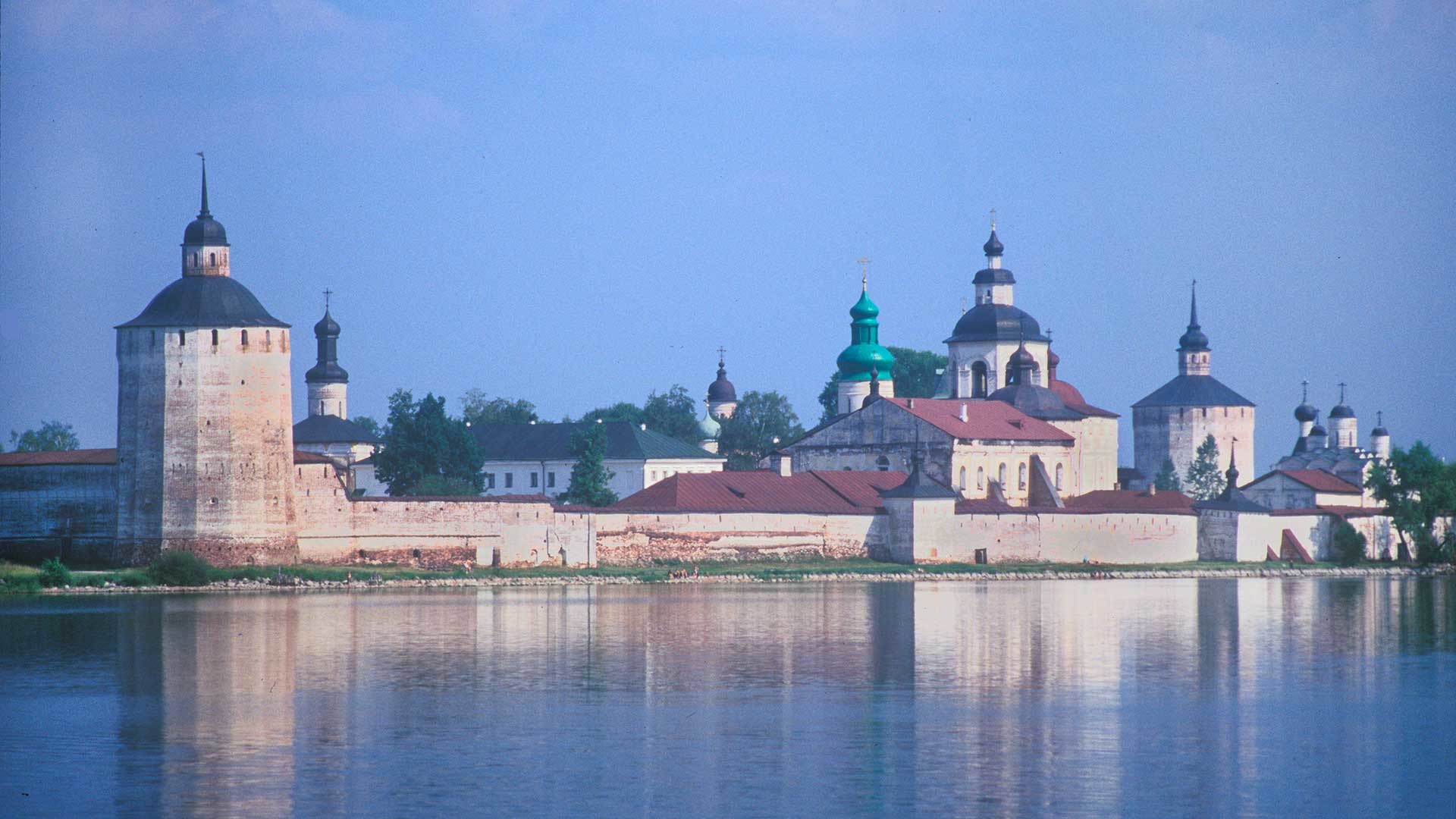
From left: Belozersk Tower, Gate Church of St. John Climacus, Cathedral of Decapitation of John the Baptist (behind trees), Dormition Cathedral, Refectory Church of Presentation, Church of Archangel Gabriel, bell tower, Smithy Tower, Church of Transfiguration. July 15, 1999.
William BrumfieldAt the beginning of the 20th century, the Russian chemist and photographer Sergei Prokudin-Gorsky devised a complex process for vivid, detailed color photography (see box text below). His vision of photography as a form of education and enlightenment was demonstrated with special clarity through his photographs of architectural monuments in the historic sites throughout the Russian heartland.
Transportation, which was particularly interested in photographs along Russia’s rail and waterways. One of the most important of these was the Mariinsky Waterway, which connected St. Petersburg via the Sheksna River with the Volga River Basin.
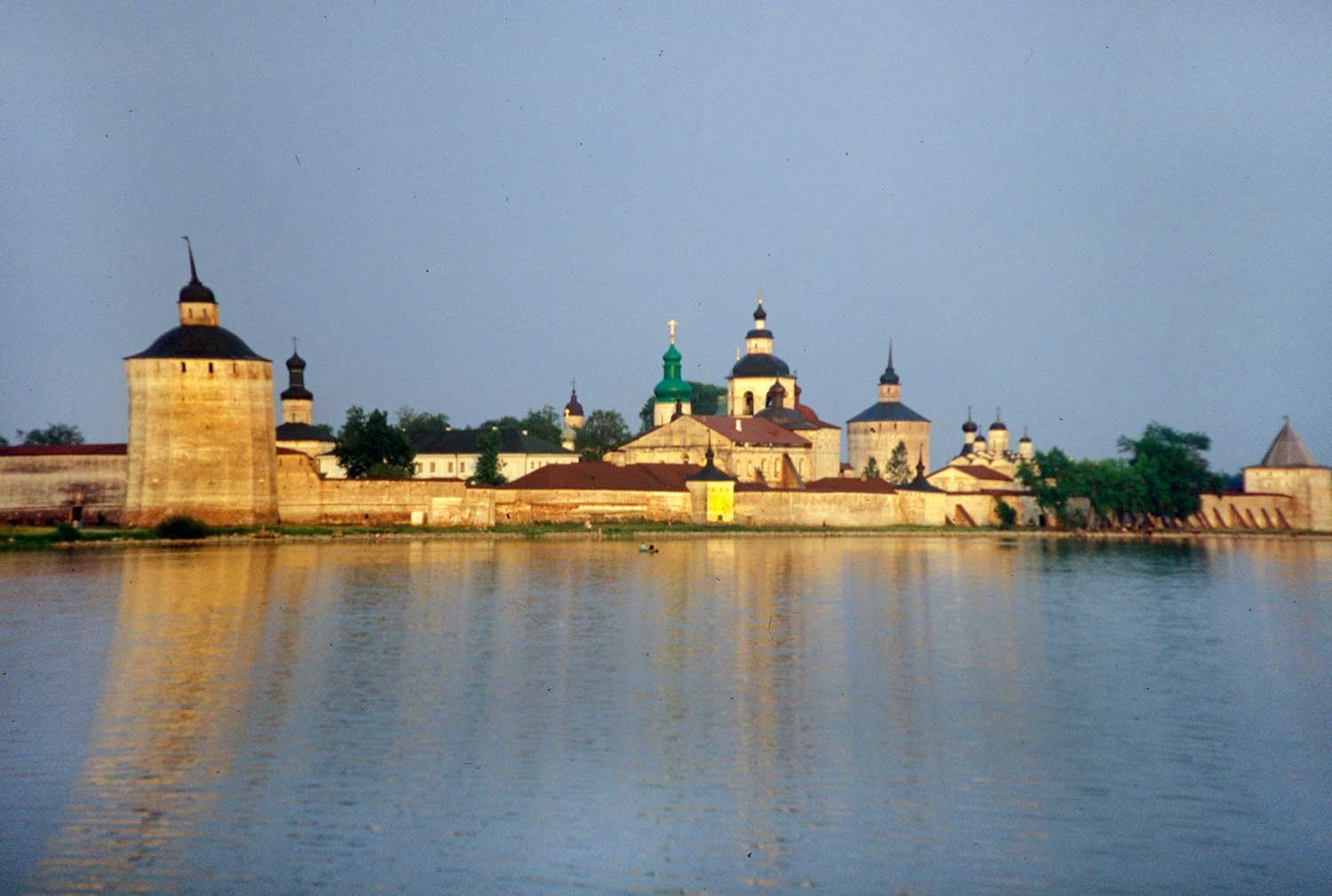
St. Kirill Belozersky Monastery. Southwest view across Siverskoe Lake. July 14, 1999
William BrumfieldIn the summer of 1909, Prokudin-Gorsky traveled along this waterway and visited historic settlements in northern Russia, including the small town of Kirillov, site of the St. Kirill Belozerskii Monastery. With its massive walls, brick towers and
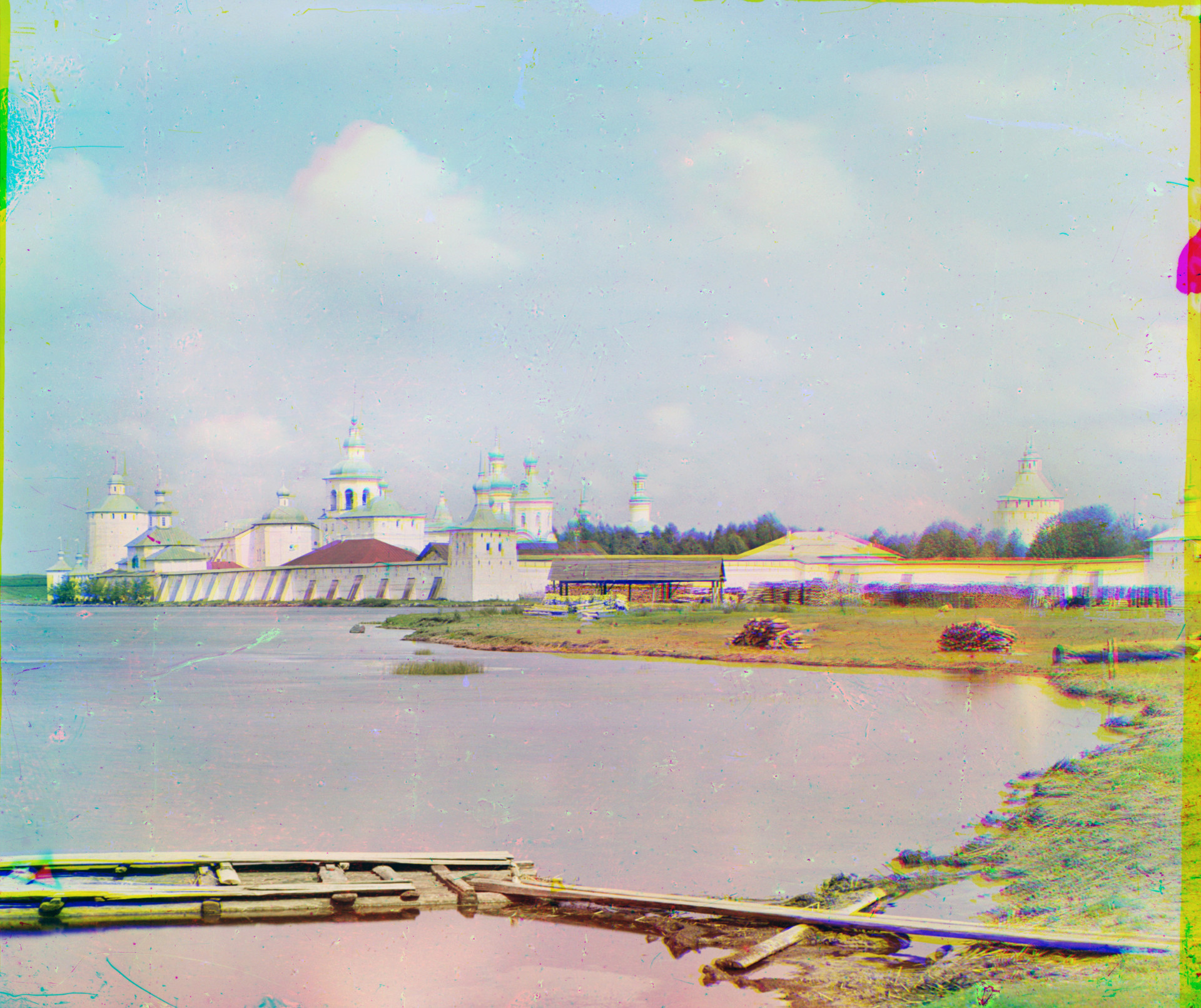
St. Kirill Belozersky Monastery. Southeast view with south shore of Siverskoe Lake. Center: Svitochnaia Tower. Summer 1909.
Sergei Prokudin-GorskyWith the revival of monasticism in Moscow during the 14th century under the direction of St. Sergius of Radonezh, pioneer monks sought remote northern areas as a test of their ascetic faith and dedication. At the same time, Muscovite princes supported their efforts, which not only spread the Orthodox faith but also consolidated Moscow's territorial expansion into the rich forests of the far north.
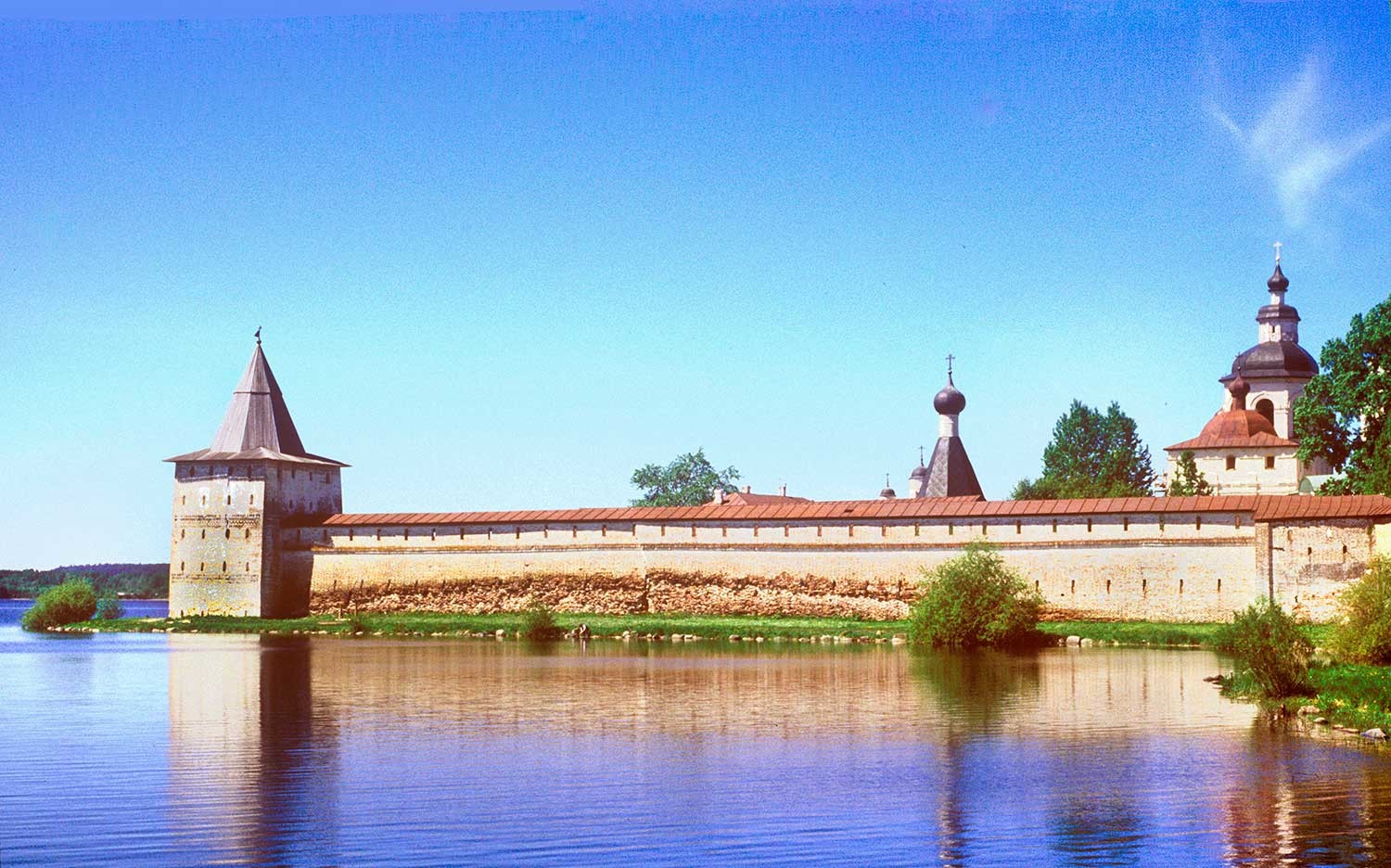
St. Kirill Belozersky Monastery. East view with south shore of Siverskoe Lake. Left: Svitochnaia Tower. June 7, 1998
William BrumfieldThe origins of this monastery date to 1397, when the monk Kirill (Cyril) of Belozersk (1337-1427) arrived at Siverskoe Lake and dug a cave dwelling for himself. Kirill had taken monastic vows in Moscow’s powerful Simonov Monastery and became of
Kirill was joined by the monk Ferapont, who the following year founded a monastic community on nearby Lake Borodavo. The nucleus of the monastery rapidly formed, and Kirill dedicated it to the revered Dormition of Mary, Mother of God. Kirill was canonized by the Russian Orthodox Church in 1547.
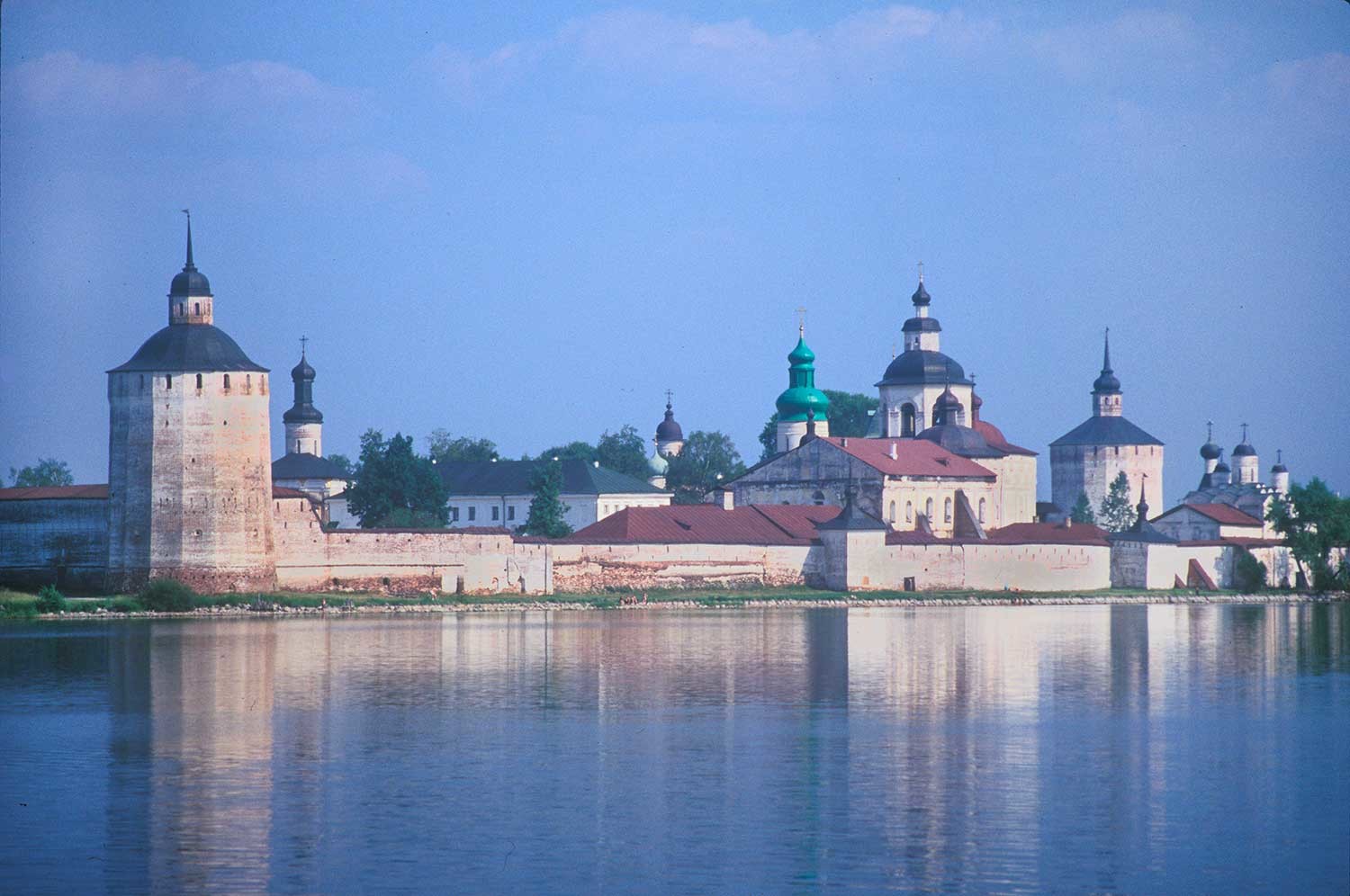
St. Kirill Belozersky Monastery. Southwest view across Siverskoe Lake. July 15, 1999.
William BrumfieldIn the turbulent early 15th century the St. Kirill Dormition Monastery played a significant role in maintaining Moscow’s dynastic stability. Consequently, the monastery received donations that had made it one of the largest in Muscovy by the 16th century, second in size to the Trinity-St. Sergius Monastery near Moscow.
As usual in medieval Russia, the original monastery was built of logs. The monastery’s first structure to be built of brick and stone was the Dormition Cathedral, begun in 1496 and expanded with small attached churches over the next two centuries.
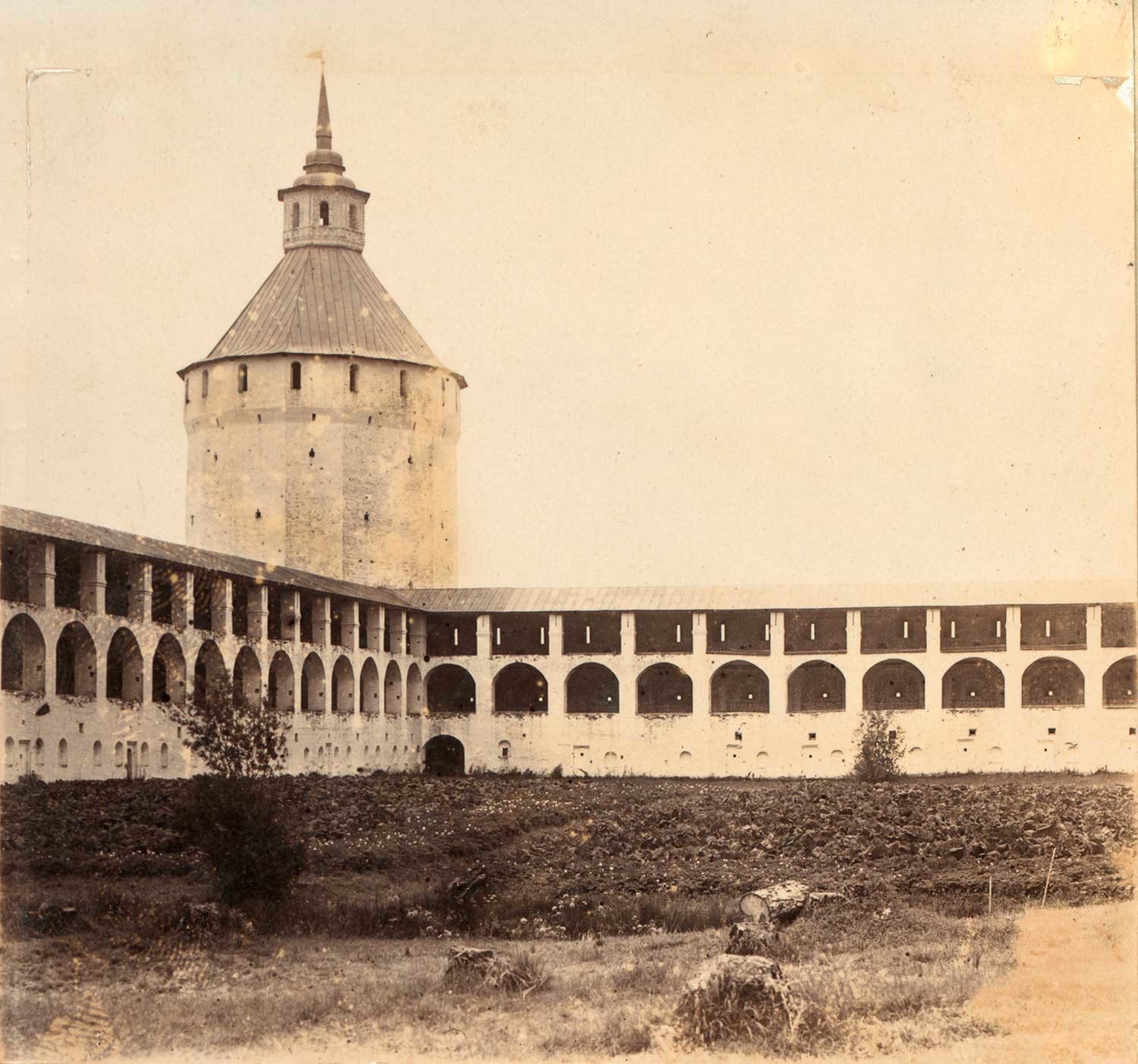
St. Kirill Belozersky Monastery. Ferapontov (Moscow) Tower and northwest walls. Summer 1909.
Sergei Prokudin-GorskyA major patron of the monastery was Basil III (1479-1533), grand prince of Moscow, who in 1528 made a pilgrimage to the monastery with his second wife, Elena Glinskaia, to pray for the birth of a son and heir. Basil subsequently sponsored two brick churches in the monastery, including the Church of the Decapitation of John the Baptist, which became the nucleus of another monastery. The dedication to John the Baptist was no doubt connected with the long-anticipated birth of his son Ivan (John) in 1530.
As a result, the monastery founded by St. Kirill came to consist of two monasteries — one dedicated to the Dormition and the other, to John the Baptist — as well as a settlement for lay workers protected by a system of walls. At the beginning of the 17th century, these walls enabled the monastery to defend the area against marauders during a period of widespread civil unrest and foreign invasion known as the “Time of Troubles.”
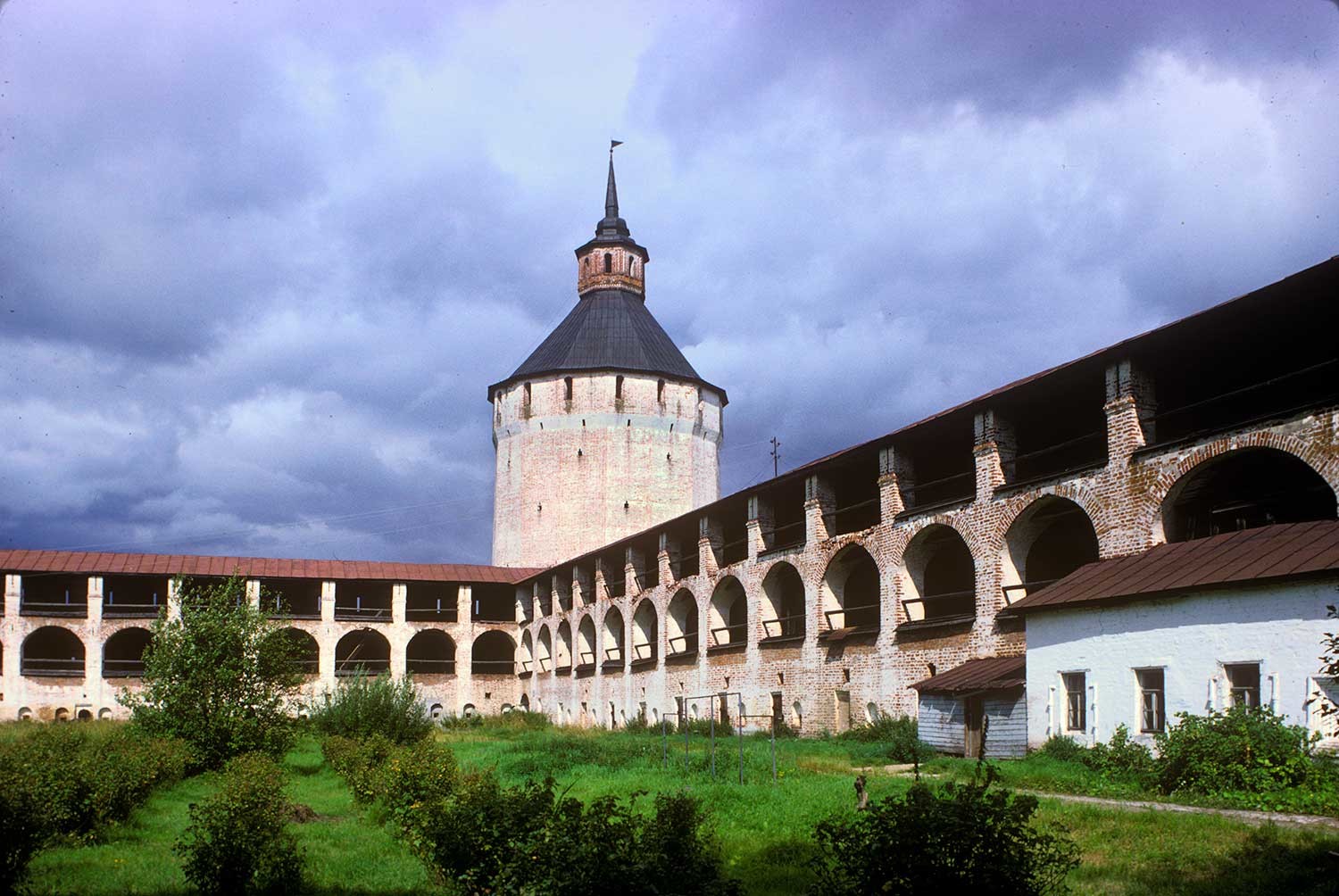
St. Kirill Belozersky Monastery. Ferapontov (Moscow) Tower. Right: north wall. August 8, 1991.
William BrumfieldA fortress never attacked
A major surge in the monastery's fortunes occurred in the second half of the 17th
In 1653, Alexis decreed the expansion of the monastery’s walls and towers, which rose over a period of several decades in the latter part of the 17th century. Prokudin-Gorsky photographed one of the most impressive segments of the wall, as did I a century later.
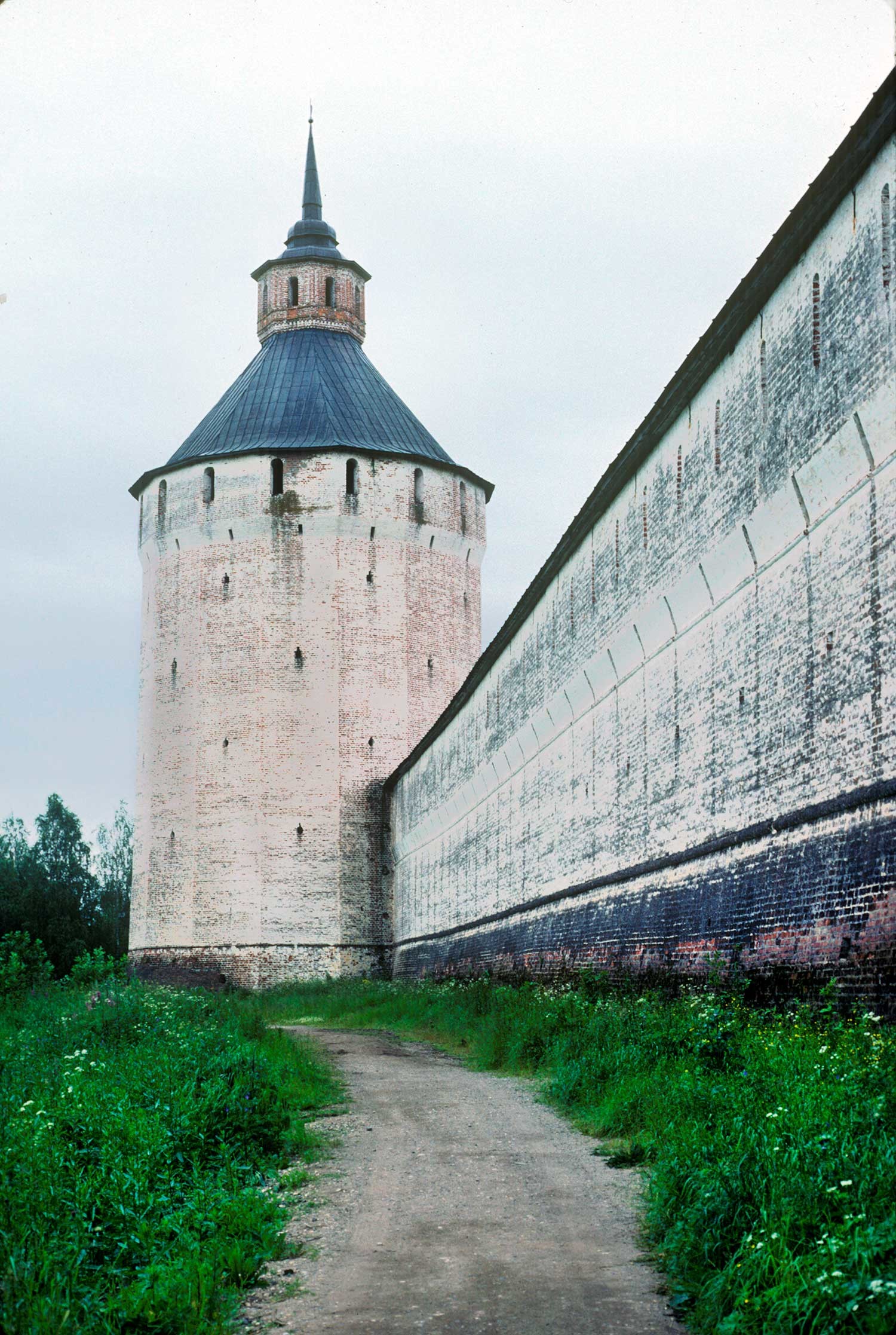
St. Kirill Belozersky Monastery. Ferapontov (Moscow) Tower, south view. Right: west wall. August 8, 1991.
William BrumfieldFortunately, no hostile army ever came close to the citadel that had been expanded at such great effort. Its walls and towers serve as a monument to the Russian ability to erect masonry structures of enormous extent during the late medieval period. With victories against the Swedes in the early 18th century and the founding of St. Petersburg (1703), Peter the Great fundamentally altered Russia’s geopolitical position, in effect eliminating the threat to the Russian north. Peter’s new capital, St. Petersburg, would itself become Russia’s surpassing construction project.
The waning importance of the St. Kirill Monastery led to its neglect during the 18th and 19th centuries. In the late 19th century a revival of interest in Russia’s medieval heritage led to restoration efforts that continued during the early Soviet period. In 1924, the first museum was established in the monastery. The onslaught of ideological repression in the 1930s undercut much of this work and led to material losses, such as the melting down of the monastery's remarkable bell ensemble.
Only after World War II did the museum within the St. Kirill Belozerskii Monastery revive its cultural potential. This museum and the monastery territory have become a major repository of Russian cultural treasures, and there are many signs of progress. The museum now has an excellent gallery of historic religious art. Part of the monastery has reverted to the use of the Orthodox Church. In 2017, the monastery celebrated its 620th anniversary, a mark of its enduring importance in Russian history.
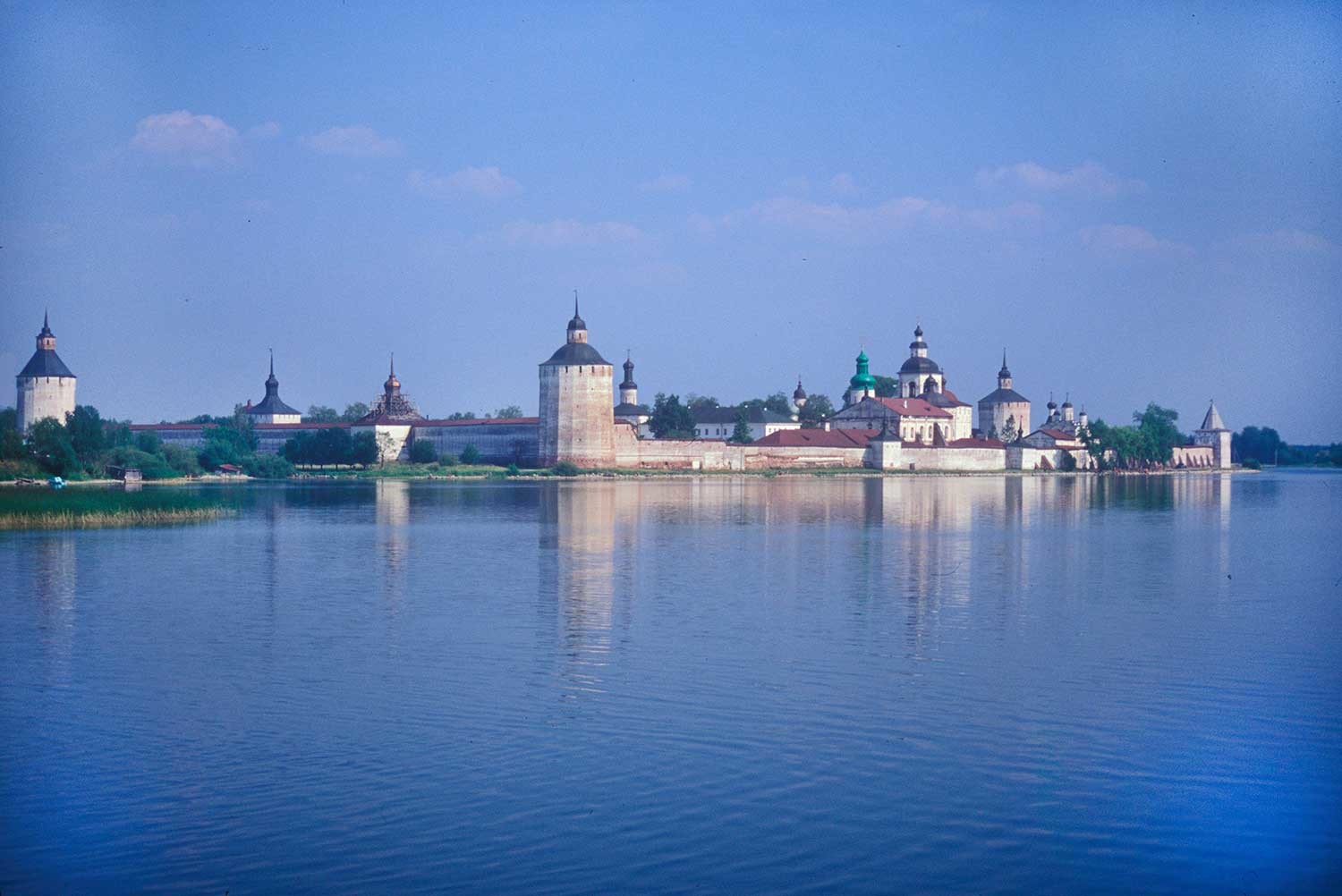
St. Kirill Belozersky Monastery. Southwest view across Siverskoe Lake. July 15, 1999.
William BrumfieldIn the early 20th century the Russian photographer Sergei Prokudin-Gorsky devised a complex process for color photography. Between 1903 and 1916 he traveled through the Russian Empire and took over 2,000 photographs
If using any of Russia Beyond's content, partly or in full, always provide an active hyperlink to the original material.
Subscribe
to our newsletter!
Get the week's best stories straight to your inbox